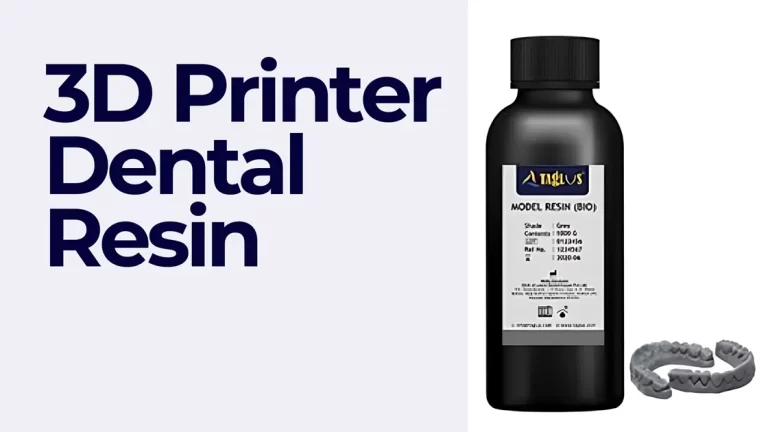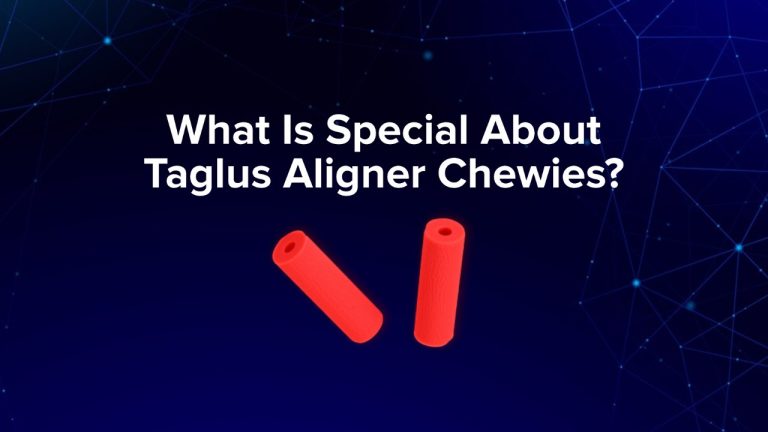Enquire Form
Getting Friendly with 3D Printer Dental Resin!

Imagine a scenario where you need to make a model of your patient’s teeth and create a set of replacement teeth for them. Instead of sticking to regular methods like impression taking, moulding, and casting, you can now use the help of 3D dental printers! Similar to how a regular printer requires ink and paper, a 3D dental printer requires a unique material called Dental 3D Printer Resin. This material is used to make dental models, prosthetics, and surgical guides for Dentists.
The arrival of 3D printer dental resin has changed how Dental practices follow traditional procedures, making Dental work more accurate and faster, offering a better patient experience. This article helps us learn the remarkable properties of 3D printer dental resin, its uses in Dentistry, and how it can help you elevate your Dental practice and skills.
Know More About 3D Printer Dental Resin:
- What Is It? – A 3D dental printing resin is a special material used in 3D printers. You can use it specifically to create dental products like Orthodontic Models, Crown & Bridge Models, Clear Aligner Models, Implant Models, Diagnostic Models, and many more for patients. It’s a liquid material that hardens when exposed to light. This property allows the 3D printer to build up layers and create accurate dental products. These resins are such that they meet the requirement of being biocompatible with the human body along with other kinds of similar necessities.
- Properties – You need to know about some of the properties of 3D Printer Dental Resin before incorporating it into your practice. All 3D Printer Dental Resins show some essential properties, namely,
> Biocompatibility – These resins suit the human body very well. They do not cause any allergic or toxic reactions. They are compatible with oral tissues and do not cause any irritation or harm.
> Strength – Different dental resins show different strengths. They create long-lasting dental models and prosthetics that can withstand high amounts of chewing and biting forces.
> Accuracy – Dental resins should make accurate and detailed dental products. This means the Dentist can provide their patients with perfect appliances as per the requirement.
> Stability & Durability – Dental resin exhibits stability and durability, meaning the products created won’t get damaged and will last long in the mouth.
> Aesthetics – Dental resins help make products that look natural, offering a wide range of shades, translucencies, and surface textures.
What Advantages Do 3D Printer Dental Resins Have Over Traditional Materials?
The advantages that 3D printer dental resin has over traditional dental materials like ceramics, composite, etc. are-
- Saves Time: The resins are of such quality that the 3D printers end up requiring less time to make the product. This allows for quicker delivery of dental objects, unlike the case with traditional materials.
- Prevents Wastage of Material: 3D printing with resin helps in avoiding wastage of material. The printer only uses the exact amount of material needed to build the required device.
- Ease of Handling: They can be easily managed in a Dental clinical set-up, which facilitates the same appointment procedures.
Applications in Dentistry:
Some common Dental applications of 3D Printer Dental Resin are as follows-
- Crown and Bridge Models – Dental resin can be used to make models for crowns and bridges.
- Orthodontic Aligner Models – The resin can also make aligner trays that help to straighten crooked teeth.
- Surgical Guides and Implant Models- These resins are used to make surgical guides for Implant placement.
- Night Guard and Mouth Guard- These resins also help to make custom-made Night Guards and Mouth Guards.
- Temporary Restorations- They are used to make temporary crowns, bridges, and veneers.
- Denture Bases & Artificial Teeth- The 3D printer resins are also used to make denture bases and artificial teeth in orthodontic practice.
Taglus is a premium brand that has its own model resin based on methacrylate resin. It has supreme qualities like low shrinkage, high stability, heat resistance and biocompatibility. These qualities are what help to create products that have high precision & high accuracy, with a smooth matte surface finish.
Commonly Encountered Problems with Poor Quality Dental Resin:
Using poor-quality 3D Printer Dental Resin can cause various problems like:
> Prints (products) may end up being inaccurate. Due to this, the appliances/restorations may not fit well and cause functional issues in the mouth.
> Poor-quality resin can produce appliances with rough surfaces, making Dental appliances uncomfortable to wear.
> Prints may have poor strength and break easily. The use of poor-quality resin in Dental 3D printing could cause the print to distort and have a bad shape.
> Some resins may cause allergic reactions.
> The poor quality of the resin can lead to the colours of the objects being inconsistent, hampering the aesthetics.
> Poor resins can create products that could be hard to work with or finish. Some resins may not work well with certain printers.
Overall, using low-quality resin can cause unnecessary problems and be a waste of time for a Dental Professional.
Conclusion:
The development of 3D Printer Dental Resin has been nothing short of a revolution in the world of digital Dentistry. It makes Dental procedures more accurate and faster.
With brands like Taglus and their Model Resins leading the way successfully, there’s a big opportunity to make Dentistry even better and improve patient results. This could mean a future where we avoid making low-quality Dental products that don’t fit well. Because of this, Dental care will become effective and easier for everyone to access.
References:
- Prause E, Malgaj T, Kocjan A, et al. Mechanical properties of 3D-printed and milled composite resins for definitive restorations: An in vitro comparison of initial strength and fatigue behaviour. J Esthet Restor Dent. 2024; 36(2): 391-401. doi:10.1111/jerd.13132
- Nulty, Adam. (2021). 3D Printing Part 2 – A Literature Review Of 3D Printing Materials in Dentistry. 10.20944/preprints202105.0316.v1. https://www.moderndentistrymedia.com/apr_may2022/ID-AE_12-2_Nulty.pdf
Know More About Us
SignUp To Our Newsletter And Get To Know More About Taglus
Copyrights@taglus-2025
*Taglus is a trademark of Vedia Solutions










Leave a Reply